Media logic is dead … sort of.
We don’t live in a mass-media society anymore. Instead, we are embraced by the Electronic Age.
Media logic seems to be changing in our wired world. But rather than simply dying, it seems to be re-emerging — in force like a binary tsunami.
As a PR professional at the intersection of traditional and digital media since 2005, I want to highlight why we must embrace digital-first — or perish as a profession. 1Silfwer, J. (2011, June 17). PR Must Adapt or Die. Doctor Spin | The PR Blog. https://doctorspin.net/pr-must-adapt-or-die/
Here we go:
Classic Media Logic: Beware the News
Classic media logic can be regarded as a rhetorical approach to PR theory.
“The position and size of articles on the front page is determined by interest and importance, not content. Unrelated reports […] are juxtaposed; time and space are destroyed and the here and now are presented as a single Gestalt. […] Such a format lends itself to simultaneity, not chronology or lineality. Items abstracted from a total situation are not arranged in causal sequence, but presented in association, as raw experience.“
Source: The new languages (1956) 2Carpenter, E. & McLuhan, M. (1956) The new languages. Chicago Review. 10(1) pp. 46 – 52.
Contrary to popular belief, classic media logic is not one single theory. Instead, it’s a collection of theories about how the medium and its context influence mediated messages.
“[…] each communication channel codifies reality differently and thereby influences, to a surprising degree, the content of the message communicated.”
Source: The new languages (1956) 3Carpenter, E. & McLuhan, M. (1956) The new languages. Chicago Review. 10(1) pp. 46 – 52.
Classic Media Logic Effects
Classic media logic is hypothesised to influence the news media in the following ways: 4Nord, L., & Strömbäck, J. (2002, January). Tio dagar som skakade världen. En studie av mediernas beskrivningar av terrorattackerna mot USA och kriget i Afghanistan hösten 2001. … Continue reading
“The dominant processes, established routines, and standardized formats which frame and shape the production of mass-media content, especially its representation or construction of reality, and its manufacture of news. Media logic intersects with commercial logic and political logic — confluences associated with such phenomena as tabloidization and the mediatization of politics. Media logic exists wherever mediation exists. It contributes to the shaping of social order in modern post-industrial cultures.“
Source: Oxford Reference 5Media Logic. (2023). Oxford Reference. https://www.oxfordreference.com/display/10.1093/oi/authority.20110810105357611
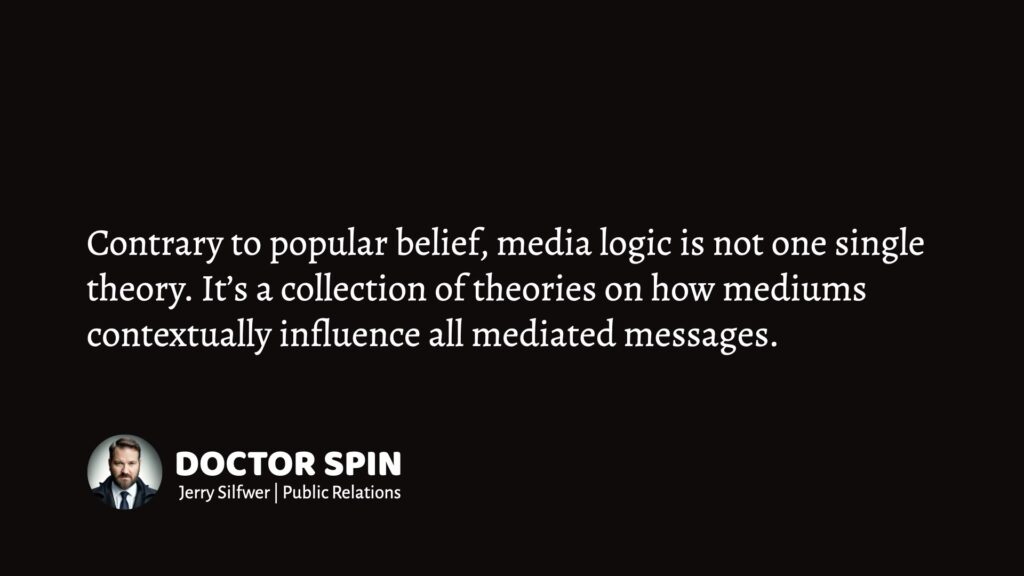
Learn more: Media Logic is Dead, Long Live Media Logic
Enter: The Electronic Age
Human culture is often described based on our access to production technologies (e.g., the Stone Age, the Bronze Age, and the Iron Age).
According to Marshall McLuhan and the Toronto School of Communication Theory, a better analysis would be to view societal development based on the prominence of emerging communications technologies.
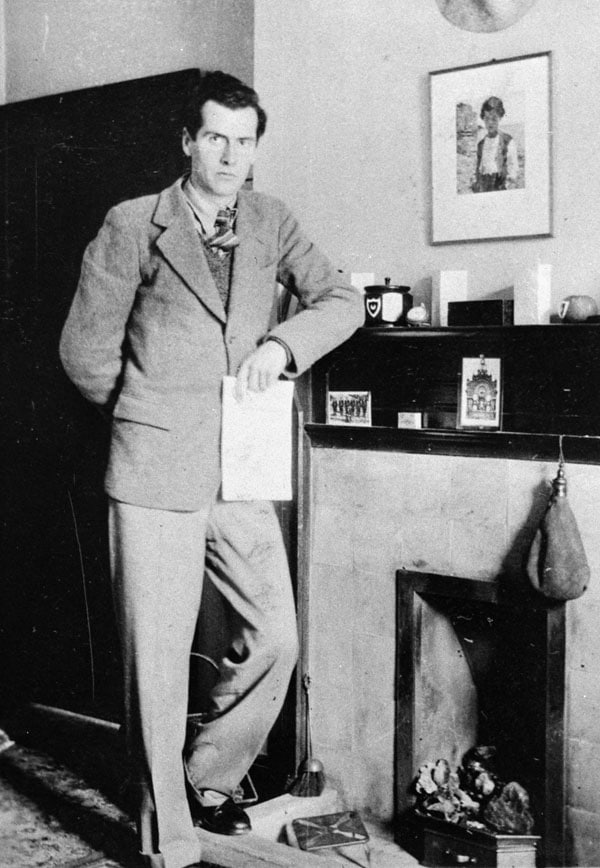
McLuhan’s Four Epochs
McLuhan suggests dividing human civilisation into four epochs:
“The Gutenberg Galaxy is a landmark book that introduced the concept of the global village and established Marshall McLuhan as the original ‘media guru’, with more than 200,000 copies in print.”
Source: Modern Language Review 6McLuhan, M. (1963). The Gutenberg galaxy: the making of typographic man. Modern Language Review, 58, 542. https://doi.org/10.2307/3719923
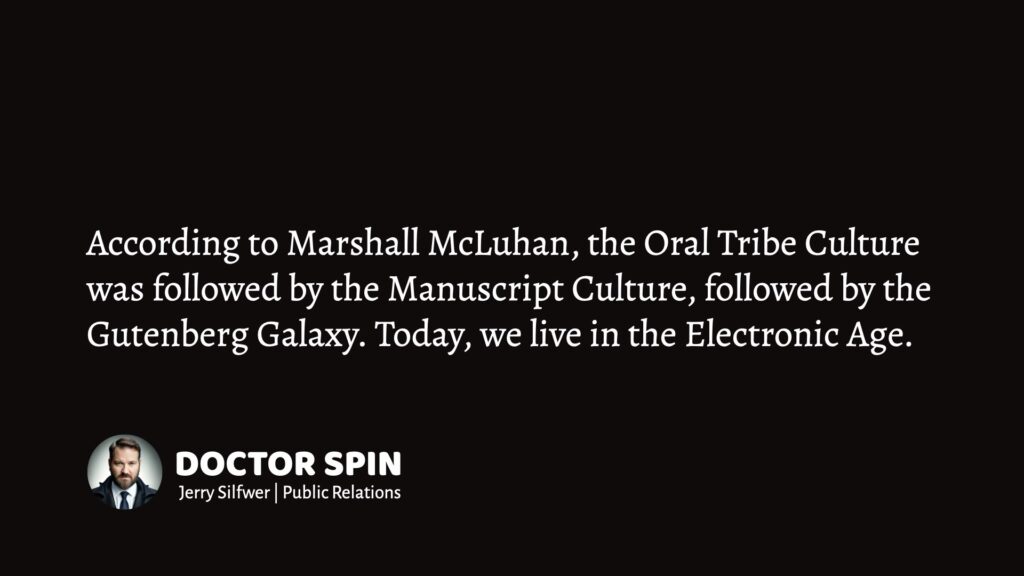
As a PR professional and linguist, I subscribe to the concept of the Electronic Age. I firmly believe society is unlikely to revert to the Gutenberg Galaxy.
Like the rest of society, the PR industry must commit to digital-first, too. Mark my words: It’s all-in or bust.
Read also: The Electronic Age and the End of the Gutenberg Galaxy
Media Logic and Network Effects
In a mass media-centric society, there are few senders and many recipients. Hence, the senders’ agenda will affect many.
Everyone with internet access is several steps closer to real mass influence. Meanwhile, special interests can circumvent traditional gatekeepers and speak directly to their sometimes massive audiences.
In a network-centric society, we are all senders and recipients simultaneously. Marshall McLuhan stated the idea that the media tends to amplify the human body; the telephone is an amplification of your ears, and a notebook is an amplification of your memory.
Networked media displaces human-to-human relations and group dynamics across time and distance in a way that we can’t even begin to see the full extent of.
Services like Google and Facebook are designed to amplify word-of-mouth mechanics, but can virality (effect) ever replace newsworthiness (idea) without something essential getting lost along the way?
With all of this in mind, we might be doomed to a variation of a Postman-esque dystopia where we slowly stimulate ourselves to death. 7Silfwer, J. (2016, December 5). How Social Media Divides Us. Doctor Spin | The PR Blog. https://doctorspin.net/social-media-divides-us/
Enter: Social Media Logic
Media logic is a set of theories describing how the medium affects the media. Typically, the format (as the medium dictates) influences the mediated message.
“Media logic is defined as a form of communication, and the process through which media transmit and communicate information. The logic and guidelines become taken for granted, often institutionalized, and inform social interaction. A basic principle is that media, information technologies, and communication formats can affect events and social activities.“
Source: The International Encyclopedia of Political Communication 8Altheide, D. L. (2016). Media Logic. The International Encyclopedia of Political Communication, 1 – 6. https://doi.org/10.1002/9781118541555.wbiepc088
As famously stipulated by Marshall McLuhan, “The medium is the message.” What are the typical effects of media logic on mediated messages?
Classic Media Logic Effects
Classic media logic is hypothesised to influence the news media in the following ways: 9Nord, L., & Strömbäck, J. (2002, January). Tio dagar som skakade världen. En studie av mediernas beskrivningar av terrorattackerna mot USA och kriget i Afghanistan hösten 2001. … Continue reading
The effects of the above media logic can also be recognised in social media. Still, social network algorithms seem to add even more effects:
Social Media Logic Effects
“Social media logic, rooted in programmability, popularity, connectivity, and datafication, is increasingly entangled with mass media logic, impacting various areas of public life.”
Source: Writing Technologies eJournal 10Dijck, J., & Poell, T. (2013). Understanding Social Media Logic. Writing Technologies eJournal. https://doi.org/10.17645/MAC.V1I1.70
Based on the suggested additions for social platforms, we can add four extra dimensions to the classic media logic effects model:
Social media logic seems entangled with classic media logic. While more complex, social networks seem to amplify the effects of classic media logic.
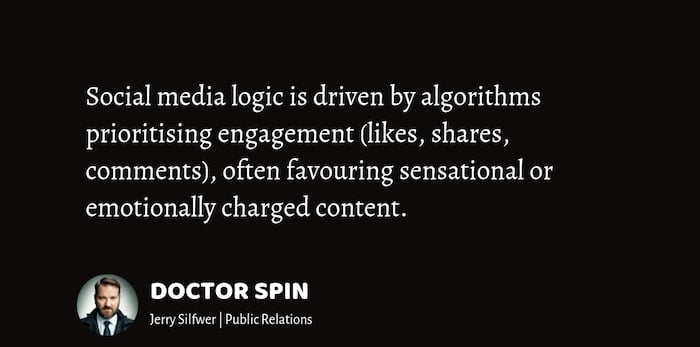
Learn more: Social Media Logic
The Future of PR: Digital-FIrst
We need to claim the death of media logic — at least as we know it. We must understand and harness the differences between classic media logic and social media logic.
There should also be room for future PR professionals in this brave new world.
When Brian Solis and Deirdre Breakenridge published Putting the Public Back in Public Relations: How Social Media Is Reinventing the Aging Business of PR in 2009, it proposed how PR should embrace the digital-first media landscape and elevate our profession to new heights. 11Solis, B. & D. Breakenridge (2009, February 1). Putting the Public Back in Public Relations: How Social Media Is Reinventing the Aging Business of PR. Amazon.com: Books. … Continue reading
Journalists and politicians alike are desperately blaming technology. Governments are pushing tech giants to censor speech. Silent miners and mass media tycoons have confused the selfie generation. Many people struggle with social media angst.
But to make ourselves useful, we must educate ourselves as professionals, media consumers, and producers.
Since traditional media logic is mass media-centric, its principles have been rendered useless for those looking to harness the power of the social web.

THANKS FOR READING.
Need PR help? Hire me here.

PR Resource: Free Media PR Course
Spin Academy | Online PR Courses
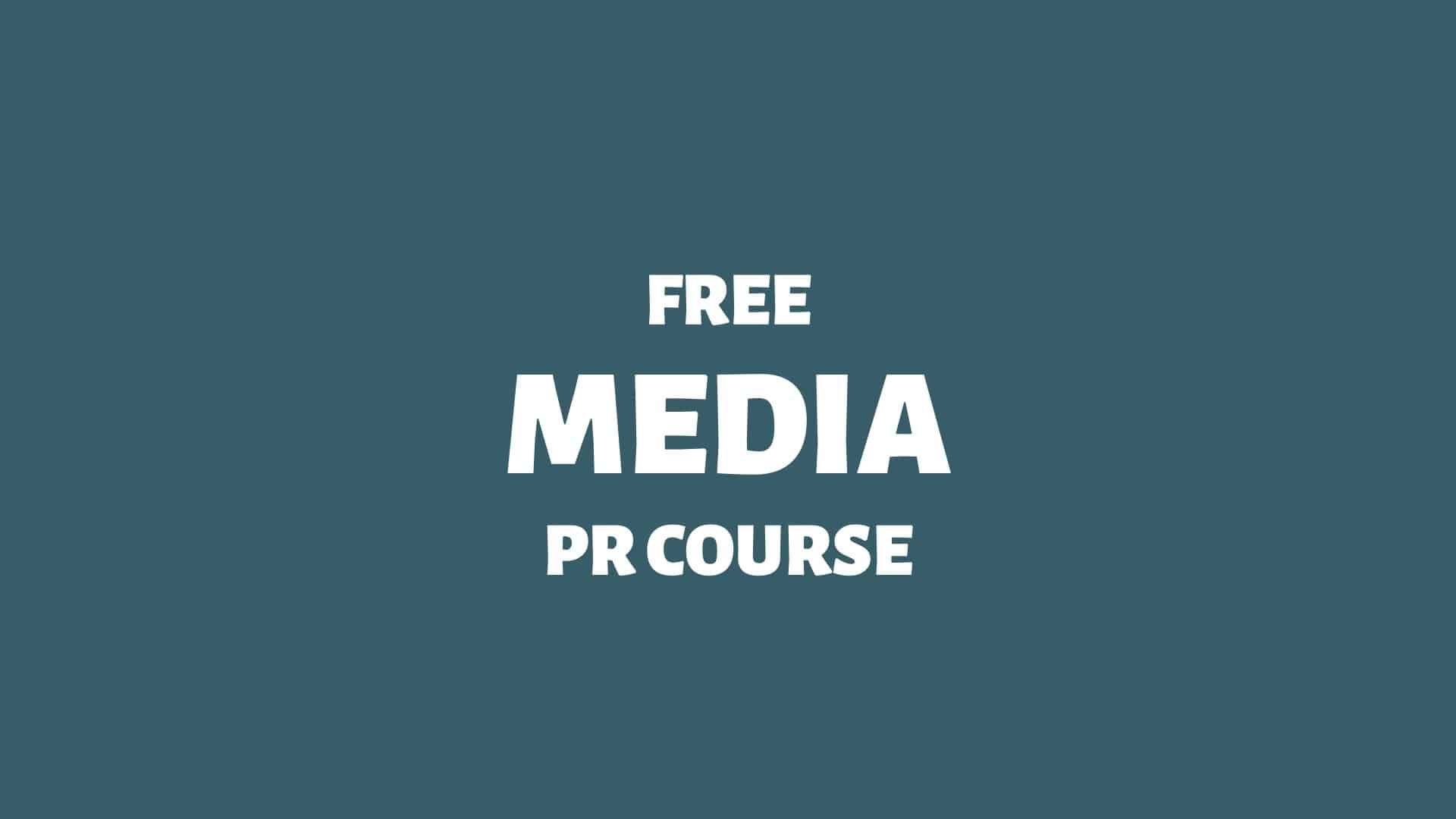
Spin’s PR School: Free Media PR Course
Elevate your public relations skills with this free Media PR Course—a must-have resource for all aspiring public relations professionals. Boost your career now!
Media Theory
Media Logic
Journalism
Digital Media
Learn more: All Free PR Courses
💡 Subscribe and get a free ebook on how to get better PR.



